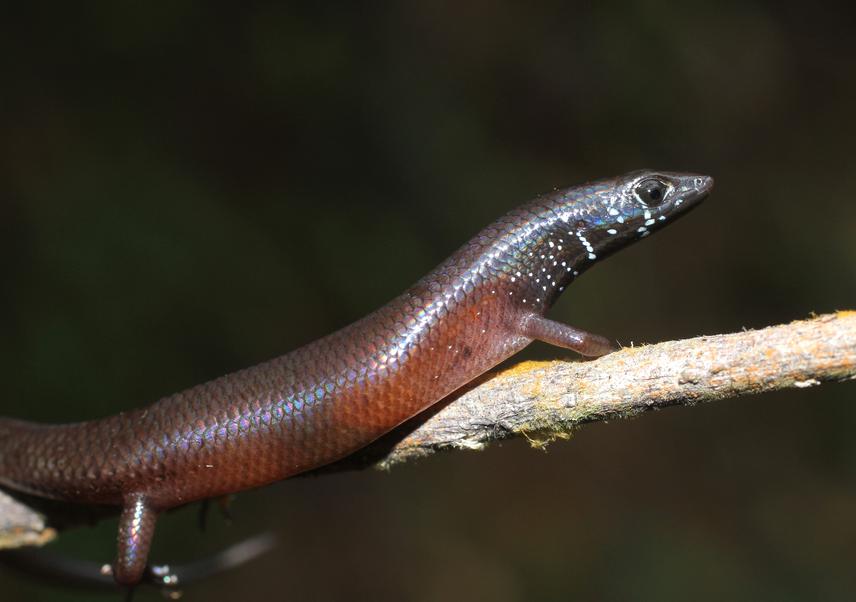Iresha Nilmini Harischandra
Lankascincus is an endemic skink genus in Sri Lanka. Lineage of Lankascincus genus and the skink family classification have been controversial in recent past. Morphological assessments have been carried out on the species of Lankascinus at different times. However, a collective morphological assessment of all the species of Lankascincus is not available in the published literature. Therefore, clarify the research gaps and to confirm the lineage of Lankascincus genus this essential to implement the conservation measures and decision making.
The current study is proposed to carry out a morphological characteristic assessment and a DNA based molecular assessment to determine whether the Lankasnincus skinks of Sri Lanka belong to a single monophyletic clade and to observe the relationship between them and other skink genera.

L. gansi. © Suneth Kanishka
Sri Lanka is an island in the Indian Ocean harboring a rich biodiversity to be one of the hottest hotspots in biodiversity in the world. Among a diverse reptile fauna, 32 species are skinks which categorized under the Family Scincidae. One of every four species of lizards in the world is a skink making them a significant component of reptile diversity.
Currently, Sri Lanka is facing towards a disappearing biodiversity due to industrial revolution causing lots of pollution, deforestation, fragmentation of habitats with the intervention of anthropogenic livelihood which enhancing the rate of ongoing sixth mass extinction of biodiversity. Deforestation, leading to loss of habitat and habitat fragmentation are the main threats faced by reptile fauna of Sri Lanka. The rate of forest depletion and loss of wild life habitats in Sri Lanka is considered one of the highest in South Asia with more than 50% of the forest cover being lost during the last century alone.
Absence or lack of accurate data on many species of Sri Lankan reptiles is the major obstacle in correctly assessing their current conservation status as well as preparing species specific conservation action plans for the threatened reptile species. Most of the studies done to date have focused mainly on the distribution of reptiles with little attention being paid to study the ecology and biology of at least the threatened and endemic reptile species. Despite the morphological characterization and description of species, there are very few DNA based molecular characterization of Sri Lankan reptiles including skinks in Sri Lanka.
Therefore the study focus to study the skink genus, Lankascincus for a morphological and genetic assessment of the species to delineate the taxonomic and phylogenetic lineages of the skink genus.